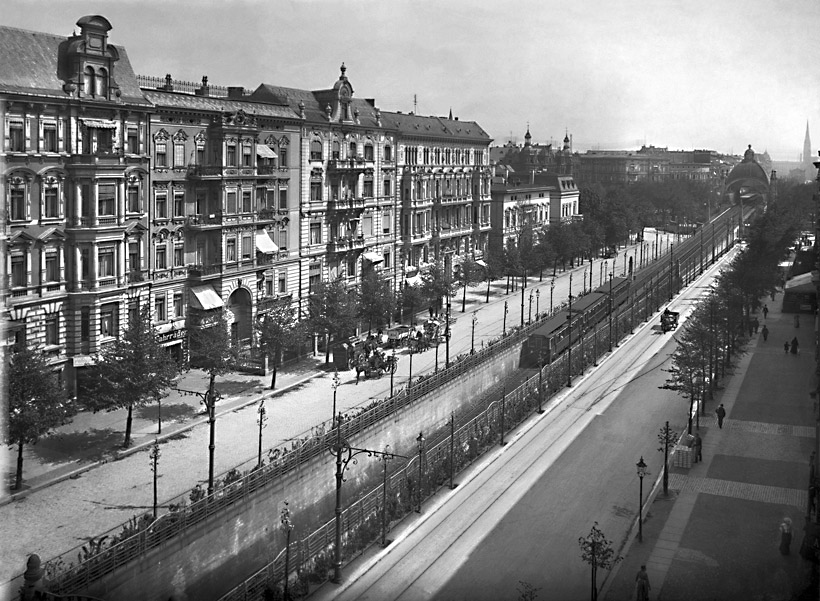
Image credits »© Landesarchiv Berlin, F Rep. 290, Nr. II 3370 (Waldemar Titzenthaler).
A means of transport transforms the city. Berlin and the beginnings of U-Bahn
The U-Bahn is a defining feature of Berlin’s transport network and urban landscape. Transporting 572 million passengers each year (2021), it is an essential component of local public transport, without which everyday life in the capital could hardly be imagined. It is easy to forget, however, that much of what we use each day has a long history that dates back to the late nineteenth century.
The project explores this period of upheaval. It investigates the timespan between the discussion of various solutions to deal with the increasing volume of traffic in Berlin around 1890, and the suspension of U-Bahn construction in the wake of the Great Depression in the early 1930s. The project focuses less on technical details and more on the question of how the establishment of a new means of transport brought about changes for both the city and its inhabitants, as well as where traces of this development can be found today.
The Ernst Reuter Archives Foundation approaches this complex collection of themes from various perspectives. Project seminars for students of the Master’s program “Historical Urban Studies” will take place at the Technical University of Berlin’s Center for Metropolitan Studies during the summer semester of 2022 and the winter semester of 2022/23. Within this context, texts for a dedicated thematic layer of the berlinHistory app will be created. A workshop has also been planned to bring historians and transport experts together, motivated by the notion that the ideas and working methods from the early years of Berlin’s U-Bahn might offer valuable insight for city and transport planning today.
